Table of contents
Short grain rice ( raw, Oryza sativa ssp. japonica) has a round shape and a soft core. Due to its high starch content, the rice sticks together when cooked and is therefore used in dishes such as rice pudding, risotto or sushi.
Using short grain rice in the kitchen:
What is short grain rice? The grains of raw short grain rice ( organic) are round to oval and a maximum of 5.2 mm long. The so-called medium grain rice also belongs to the Oryza sativa ssp. japonica group and differs in its length ( 5.2 mm-6 mm) from the smaller round grain rice. Since round grain rice contains more amylopectin (a rather insoluble starch), it gelatinizes or sticks together very strongly when cooked. Both categories (medium grain rice and Short grain rice) Use - see the examples below. 1
- Risotto rice : The starch released during cooking gives the short grain rice for risotto its typical creamy consistency without losing its bite. The Italian, starchy rice varieties Arborio, Vialone or Carnaroli are preferred for risotto. Risotto rice can be a It can be either short grain rice or medium grain rice.
- Sushi rice : Sushi rice, which comes from Japan, is small-grained, has a sweet aroma and is very rich in starch. The high starch content gives it a very sticky consistency, which is necessary for making sushi. However, sushi rice can also be for other rice dishes.
- Paella rice : For paella, the varieties Bahía, Senia and Bomba, which are grown in Catalonia, Valencia and Murcia, are often used. The starch content is significantly lower here than in other short grain rice varieties and the rice therefore remains firmer and grainier when cooked. For paella, you can use Short grain rice can also use medium grain rice.
- Rice pudding (Japanese rice) : Rice pudding is mainly used for desserts. The rice is cooked directly in milk or a milk substitute (e.g. oat milk, almond milk, soy milk, hazelnut milk, etc.). The starch dissolves in the milk and thickens it. The cooked rice is rather mushy, but the grains should still be firm. In Japan it is also used for savory dishes.
- Sticky rice : Sticky rice is mainly used to make sweet rice dishes (e.g. rice pudding). When cooked, the sticky rice softens and loses its grainy shape. The intensive release of starch during the cooking process (heating) is what makes it sticky and gives this type of rice its name.
- Mochi rice : Mochi is a Japanese medium-grain rice (or short-grain rice) which, due to its sweet aroma and sticky consistency, is mainly used in sweet rice dishes or mochi (rice cakes with a sweet filling).
- Black natural rice : also belongs to the medium and short grain rice varieties. This whole grain rice from China was crossed with an Italian variety. It is therefore also known as black Piedmont rice. The anthocyanins contained in the shell give it this color. In Asia, it is also used Black sticky rice, mostly used in desserts.
Frequently asked questions: But how long do you cook rice? How long you want to cook rice depends on the type. At 15-25 minutes, white rice needs significantly less time to cook than whole grain rice (30-45 minutes). Preparation of short grain rice should take about 30 minutes.
How do you portion rice correctly? If the rice is intended as a side dish or dessert, 50-60 g is recommended. For a main course, ideally use 100 g (for risotto and rice pudding). For making sushi, it is best to use around 150 g Rice (raw per person).
How much liquid do I need? The amount of liquid used depends on the type of rice. For risotto and paella: 3 cups of broth for 1 cup of rice (raw). When cooking rice pudding, the ratio of rice to milk is 1:5. Sticky rice and sushi rice have a short grain rice-water ratio of 1:1.5. When preparing mochi rice, 1 cup of rice is followed by 2.5 cups of water. 2
Vegan recipe for rice pudding made from short grain rice with vanilla:
Ingredients : 200 g short grain rice (raw, organic), 400 ml water, 600 ml oat milk, 3 tbsp agave syrup, 1 tsp bourbon vanilla (orvanilla powder), 1 pinch of sea salt.
Preparation : Bring raw rice to a boil in a saucepan with water and plant-based milk and then reduce heat to medium. Add agave syrup, vanilla and salt and simmer for another 30-35 minutes until the rice grains are soft and the rice pudding is creamy. Stir frequently. so that the rice doesn't burn. The rice pudding can be sprinkled with cinnamon and served with pear or apple compote or apple sauce. Once well cooled, the rice pudding can be stored in the fridge for 2-3 days.
Vegan short grain rice recipes as a side dish:
Typically, short grain rice (organic) is used in dishes as a main course and not as a side dish. However, short grain rice can be turned into a side dish by adding fruit and vegetables - as rice pudding or risotto. Sushi rice can also be made into a vegan version by reducing the amount of rice and adding other components to act as a side dish. 2 Here we have a delicious recipe for risotto with green asparagus and macadamia.
Another processing idea is the fermentation of raw rice. Fermented rice dishes include Amazake, a sweet drink made from fermented rice, or Yakgwa, a Korean rice pastry, as well as Sinasir (rice pancakes). 3
Vegan recipes with short grain rice can be found under the note: " Recipes that have the most of this ingredient ".
| Not only vegans or vegetarians should read this: Vegans often eat unhealthily. Avoidable nutritional errors. |
Shopping - where to buy short grain rice?
Supermarkets and wholesalers such as Coop, Migros, Denner, Volg, Spar, Aldi, Lidl, Rewe, Edeka, Hofer etc. now often offer the various types of short grain rice such as risotto rice or rice pudding in organic quality. Whole grain varieties and fair trade products can be found in health food stores, organic shops, organic supermarkets ( Denn's Biomarkt, Alnatura), drugstores or specialty stores. Various online retailers also have a wide variety of short grain rice varieties on their websites, including organic rice.
What do I have to consider when buying rice? When buying rice, make sure it is organic, as conventional cultivation involves the use of pesticides. Rice also has different quality levels. The following applies: the lower the amount of broken rice, the higher the Rice quality. Wikipedia lists the following levels not only for short grain rice, but for rice in general: Top quality rice contains a maximum of 5% broken grains. The proportion in standard rice, however, is up to 15%. Household rice has a broken rice content of up to 25%. The lowest quality level is broken rice, which consists of up to 40% broken grains.
But what is broken rice? Rice grains that have broken during processing after harvesting are called broken rice. Its contents and nutrients are the same as those of unbroken rice, only the preparation and the size of the grains differ. Due to its rough Broken rice releases significantly more starch when cooked than unbroken rice due to its broken surface. The higher the proportion of broken rice, the more sticky the rice is after cooking. Since dishes made from short grain rice usually rely on their sticky consistency, you can accept the proportion of broken rice when buying rice or even specifically look for it to get a particularly sticky result. 4
Short grain rice preparation:
Short grain rice is not washed before preparation because you want to preserve the starch that adheres to the rice grain. This gives rice dishes such as paella, rice pudding, short grain rice risotto, etc. their sticky, creamy consistency.
Rice can be prepared in different ways. It can be prepared in a saucepan, a rice cooker or a rice steamer.
Preparation in a cooking pot: There is the water method and the soaking method. The water method is probably the safest way to cook rice, because the rice cooks in plenty of water. Because of the large amount of water, the rice rarely burns. The excess liquid is poured off, after the rice is ready, simply drain it. Unfortunately, cooking in a lot of water means that valuable vitamins escape into the air and water. The dissolved vitamins are then lost when the excess liquid is poured off. The soaking method is therefore more suitable. The The amount of water used in this method is only large enough for the rice to completely absorb the liquid when cooking. If there is too much water in the pot, the rice will end up too soft. If there is too little water, there is a risk of it burning. Since you can cook risotto rice and rice pudding has to be stirred constantly, preparing these two types of rice in a saucepan is ideal.
Preparation in a steamer: Not only vegetables and fish, but also rice can be prepared in a steamer. Steam cooks the rice evenly from all sides. This means that the rice does not lose any vitamins to the cooking water or the air and also retains its own aroma. Due to the gentle Steaming is considered the healthiest way to prepare rice because it preserves most of the vitamins and minerals.
Preparation in a rice cooker: Using a rice cooker, you can make the perfect rice in no time at all without having to stand there the whole time. The inner coating of the device prevents the rice from burning during cooking and as soon as the internal temperature exceeds 100 °C, the device switches off automatically switches to keep warm mode. It is also not possible for the water to boil over in the rice cooker.
Found in the wild:
There is no known wild form within the species Oryza sativa. Rice originally comes from the species Oryza rufipogon from 5, but has undergone numerous breedings. All other Oryza species - except the cultivated plants Oryza sativa and Oryza glaberrima - are wild rice plants. . The dark grains of the genus Zizania (Manchurian Z. latifolia and North American Z. aquatica) are also often found in the trade, referred to as wild rice. The Manchurian species is found in the wild in northern China, the American species is also known as water rice. Brücher also describes also a tropical wild rice from the Orinoco estuary ( Rhynchoryza). 5
Storage:
Rice (raw and possibly organic) should be stored in a dark, cool and dry place. After purchasing the rice, remove it from its original packaging and store it in storage jars, for example, so that the harmful substances contained in the packaging materials do not penetrate the raw rice. can.
The minimum shelf life varies depending on the type of rice. Whole grain rice can be kept raw for at least one year, while white rice can be kept uncooked for at least two years. The longer shelf life of white rice is due to the removal of the germ and silver skin. The amount of broken rice also has an effect. on the storage time. Do not store rice near odorous foods such as coffee, tea and spices.
Cooked rice is perishable and should be consumed within a few days. If the amount of rice is too large, the leftover, cooled rice can be stored in an airtight container in the refrigerator for 1-2 days. Make sure that when heating of rice, the temperature is above 65 °C. If the rice is not cooled properly and only slightly warmed , Bacillus cereus pathogens can develop and multiply rapidly. These bacteria can cause severe vomiting and diarrhea. If you do not consume the rice within the next few days, there is a risk of the possibility of freezing it. Make sure that it is completely cooled and then packed in an airtight container. When reheating, do not cook the rice in hot water, as it will become too soft. Instead, heat the rice using steam. 2
Ingredients - Nutritional values - Calories:
100 g of raw round grain rice contains 358 kcal, which mainly come from carbohydrates. Depending on whether it is white rice or whole grain rice, the amount of fiber and nutritional values in round grain rice varies. With 6.5 g of protein, Short grain rice has less protein than long grain rice varieties such as basmati rice (9 g) and jasmine rice (7.1 g). It is also rather low in protein compared to other types of grain such as wheat (10 g) and oats (17 g). 6 There is hardly any fat.
The amount of manganese in 100 g of round grain rice (and a daily intake of about 2000 kcal) accounts for around 52% of the daily requirement. The content of 1 mg/100g can be compared to kidney beans and cooked mung beans. A lot of this trace element have spices such as cloves (60 mg/100g) or saffron (28 mg/100g). 6 Manganese plays an important role in the formation of cartilage tissue.
Round grain rice contains 4.2 mg of iron per 100g, which is 30% of the daily requirement. This value is comparable to that of oat flakes and dried peaches. Spices contain a lot of iron, but we only consume a small amount of it: e.g. thyme, dried (124 mg/100g). 6 The trace element is responsible for the transport of oxygen in the blood and helps with its storage in the cells.
The 1.3 mg of pantothenic acid (vitamin B5) contained in 100 g cover 21% of the daily human requirement. King oyster mushrooms and buckwheat achieve comparable values. The thiamine (vitamin B1) content is 0.56 mg/100g and thus covers 51% of the daily requirement. 6 Dried tomatoes and dried rosemary contain a similar amount.
The complete ingredients of short grain rice (raw), the coverage of the daily requirement and comparison values with other ingredients can be found in our nutrient tables in the CLICK FOR under the ingredient picture.
Health aspects - effects:
Is short grain rice healthy? Rice is considered healthy because it is very low in fat and filling. However, whole grain rice should be preferred to white rice because it is still surrounded by the silver skin rich in vitamins and minerals. The polished white rice lacks the removal of the silver skin these vital substances.
Cooked brown rice contains high-quality protein, the biological value of which is similar to that of fish. Rice protein is considered to be so high-quality that it can also be bought as a food supplement in powder form. The outer layers of the rice grain also contain the important secondary plant substance phytic acid. On the one hand, phytic acid binds part of the of the minerals contained in food, so that the body can no longer fully use them. But on the other hand, due to its strong antioxidant effect, it is said to inhibit the growth of tumor cells, protect against colon cancer and kidney stones and improve cholesterol levels. 7,12 Read more about Phytic acid in our article phytic acid or phytate and soaking or sprouting.
The waste product of rice processing, the fiber-rich rice bran, can help prevent cancer because it is said to have an antioxidant effect. It is said to counteract tissue damage and chronic inflammation. 13
Rice is also gluten-free. We recommend that people with gluten intolerance or celiac disease look for a note for gluten-free foods when shopping (e.g. symbol with the crossed-out ear of corn). This is because traces of gluten can be present when processing with the same machines (as for grain products).
Dangers - Intolerances - Side effects:
White rice has a much higher glycemic index (GI) than wholegrain rice and therefore leads to a faster increase in blood sugar levels. With frequent and regular consumption of white rice, the risk of developing type 2 diabetes increases. The effect is similar to industrial sugar. Whole grain rice, on the other hand, is said to reduce the risk of disease when consumed regularly. 15
The use of fertilizers and pesticides in rice-growing countries means that the groundwater in some regions is heavily contaminated with arsenic and cadmium. The rice plant absorbs the toxins with the water and accumulates them in its leaves and seeds. Higher values can be found in rice, rice cakes and rice flakes. Small children absorb arsenic more easily than adults, which is why children under 3 years of age should not be fed exclusively with rice products. 8,17,18
If you eat a lot of rice, we recommend soaking it overnight. This, rinsing and then boiling it in five parts water removes about 80% of the arsenic. Boiling alone removes 50%; steamed rice contains more arsenic. Small amounts Eating rice raw is still not a problem if you want to.
Folk medicine - natural medicine:
In traditional Chinese medicine (TCM), rice is considered an ancient remedy. It is said to promote digestion, lower blood pressure, relieve the heart and dehydrate the body. The Chinese have always used a rice soup to treat gastrointestinal ailments, allergies and kidney problems. The detoxifying and dehydrating effect of rice soup is used for fasting cures. However, the soup must not be salted, as this counteracts the dehydrating properties. 14
Occurrence - origin - ecology:
Where does rice originally come from? The first rice was found in Southeast Asia. There, residues of collected wild rice ( Oryza rufipogon) were discovered, the ancestor of our current cultivated rice ( Oryza sativa). Man probably collected rice 10 '000 years ago in China and India. Various sources assume that the first rice cultivation dates back about 6'000 to 7'000 years. The Oryza species were found in three independent domestication centers: South America, Asia and Africa. 5 Rice came to Europe from Asia and slowly spread throughout the world. 90% of rice production today takes place in Asian countries such as China, India, Japan and Thailand. But Brazil and the USA as well as European countries such as Italy, Spain and France grow rice. 9
The differentiation of cultivated rice into the subspecies japonica and indica was made by humans - on the one hand because of the different cooking properties and on the other hand because of different ecological requirements. 5
Cultivation - Harvest:
For more detailed information on the cultivation and harvesting of rice, see the ingredient wholegrain rice. There we also explain the difference between brown rice, Parboiled rice and white rice. 10
Ecological aspects:
In addition to lower water consumption, dry rice cultivation is much less harmful to the climate than wet rice cultivation, as it produces significantly less methane. 16
There is still no explicit limit for inorganic arsenic that enters the soil via fertilizers. However, research has shown that the types used accumulate less arsenic. 16
General information:
Rice is one of the world's most important crops and is considered a staple food for almost half of the world's population. How many types of rice are there worldwide? It is assumed that there are more than 120,000 different types of rice (systematics difficult), which can be divided into long grain rice (Oryza sativa ssp. indica) and short grain rice ( Oryza sativa ssp. japonica). 9 Grain sizes that lie in between can also be referred to as medium grain rice. However, medium grain rice is often also considered a subcategory of the short grain varieties.
Alternative names:
Sometimes you will find the spelling "round grain rice", but this is actually not correct. In English, round grain rice is called short-grain rice, sticky rice (not glutinous rice) is called glutinous rice and rice pudding is called rice pudding.
Key words for use:
Rice oil, wax and protein-rich feed flour are obtained from waste in rice mills. The husks of the rice grain are used for building boards and as polishing and fuel. The rice straw is used for livestock farming and as weaving material for sacks, mats and hats. 11 Rice also plays an important role in medicine and cosmetics and is also used in religious ceremonies. An Asian custom that has also found its way into our culture is the throwing of rice at weddings. Rice stands for luck, fertility and life. By throwing rice at the bride and groom, the wedding guests wish them good luck.
Literature - Sources:
Bibliography - 18 Sources (Link to the evidence)
| 1. | Donhauser RM. Reis, der. Das grosse Grundlagenbuch. 1. Auflage. Edition Michael Fischer. 2018. |
| 2. | Reishunger.de Wie lange muss Reis kochen? |
| 3. | Kyung L, Oger C. Fermentieren leicht gemacht. Verlag Leopold Stocker: Graz 2016. |
| 4. | Donhauser RM. Reis, der : Das grosse Grundlagenbuch: 100 Rezepte aus aller Welt. Edition Michael Fischer, EMF Verlag. 2018. |
| 5. | Brücher H. Tropische Nutzpflanzen. Ursprung, Evolution und Domestikation. Springer Verlag: Berlin. 1977. |
| 6. | USDA United States Department of Agriculture. |
| 7. | Plantsoftheworldonline.org Oryza sativa. |
| 8. | Bayerisches Landesamt für Gesundheit und Lebensmittelsicherheit. Untersuchung von anorganischem Arsen in Kindernahrung - Untersuchungsergebnisse 2010 und 2011. Dokument aktualisiert am: 11.12.2017. |
| 9. | Khush G.S. (1997) Origin, dispersal, cultivation and variation of rice. In: Sasaki T., Moore G. (eds) Oryza: From Molecule to Plant. Springer, Dordrecht. |
| 10. | Blumenthal A., Stransky M. Ernährung und Lebensmittel von A-Z. Editions M, 1. Auflage 1993. |
| 11. | Rehm S, Espig G. Die Kulturpflanzen der Tropen und Subtropen. Verlag Eugen Ulmer: Stuttgart. 1976. |
| 12. | Graf E, Eaton JW. Suppression of colonic cancer by dietary phytic acid. Nutrition and Cancer. 1993;19. |
| 13. | Borresen EC, Brown D, Harbison G et al. A Randomized Controlled Trial to Increase Navy Bean or Rice Bran Consumption in Coloteral Cancer Survivors. Nutr Cancer. 2016;68(8). |
| 14. | Roger P. Heilkräfte der Natur: Ein Praxishandbuch. Zürich: Advent Verlag. 2006. 212-215. |
| 15. | Hu EA, Pan A, Malik V et al. White rice consumption and risk of type 2 diabetes: meta-analysis and systematic review. BMJ. 2012;344. |
| 16. | Pini U. Das Bio-Food Handbuch. Ullmann: Hamburg, Potsdam. 2014. 609-611. |
| 17. | Bfr.bund.de EU-Höchstgehalte für anorganisches Arsen in Reis und Reisprodukten durch Verzehrsempfehlungen zum Schutz von Säuglingen, Kleinkindern und Kindern ergänzen. Aktualisierte Stellungnahme Nr. 017/2015 des BfR vom 06. Februar 2014. |
| 18. | bfr.bund.de Fragen und Antworten zu Arsengehalten in Reis und Reisprodukten. Aktualisierte FAQ des BfR vom 22. Dezember 2020. |

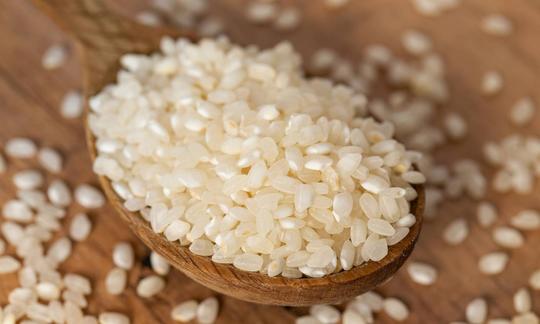

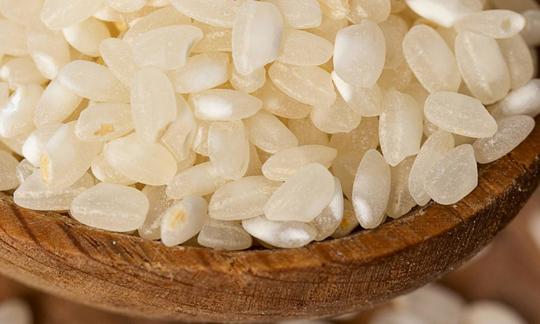

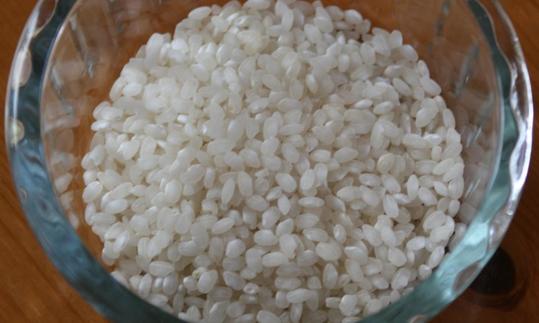

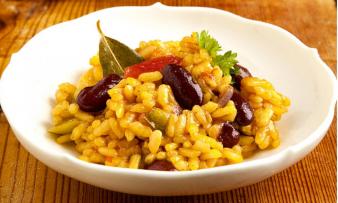
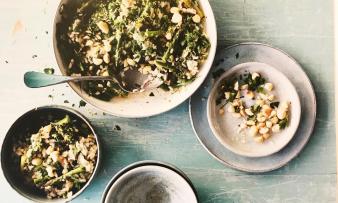


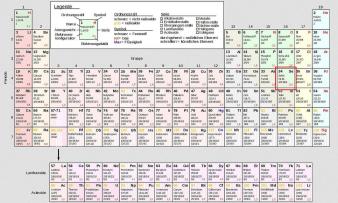


Comments